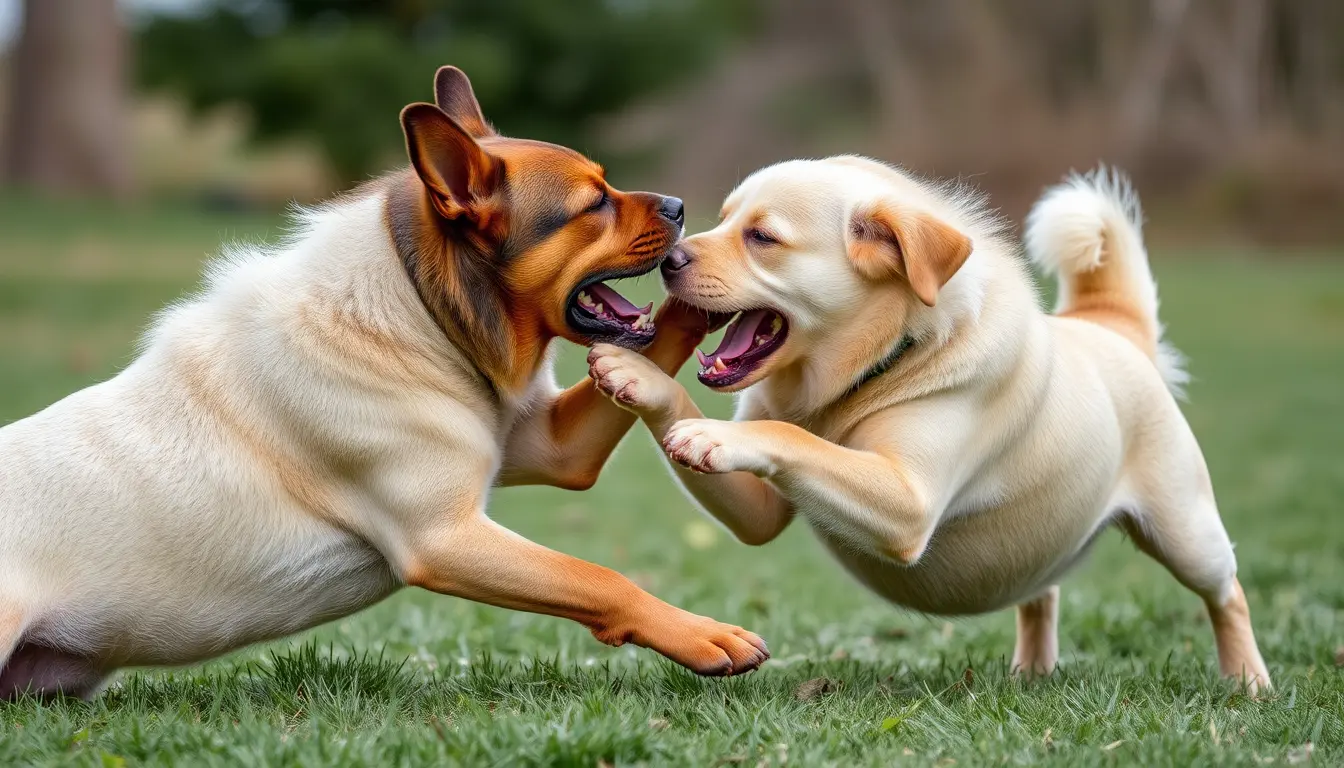Why Do Dogs Play Fight? Insights into Canine Behavior
Insights into Canine Behavior

Sustainable Treats for Happy Dogs

Founded in 2013 by former fish merchant Steve Moore, Skipper’s Pet Products is based in Grimsby, UK, and focuses on creating high-quality, sustainable dog treats. The company ethically sources its ingredients from sustainable fisheries, reducing waste by using fish co-products such as fish skins. Skipper’s Pet Products is committed to eco-friendly practices, employing recycled energy for low-temperature drying methods to maintain the maximum nutritional value of their treats. Their dedication to quality and sustainability makes them a popular choice for pet owners who want to provide nutritious, environmentally-friendly treats for their dogs.
What Is Play Fighting in Dogs?
Play fighting is a common form of interaction where dogs engage in rough-and-tumble activities that mimic real fighting. It involves wrestling, chasing, biting, and barking, often paired with wagging tails and exaggerated movements. Unlike aggressive fighting, play fighting usually lacks intent to cause harm and instead reflects social bonding and playfulness.
Dogs use body language to communicate their intentions during play fights, including loose, floppy movements, “play bows” (front legs stretched forward with rear end raised), and open mouths. These signals show that they’re engaging in fun rather than conflict. Although it might look intense to us, play fighting is usually a safe and natural behavior.
Why Do Dogs Play Fight?
There are several reasons why dogs engage in play fighting, each contributing to their social and physical development. Here are some primary motivations behind this behavior:
- Socialization: Play fighting allows dogs to build and strengthen bonds with other dogs and humans. It teaches them how to interact socially, navigate boundaries, and develop trust.
- Exercise and Physical Activity: Just like people, dogs need exercise, and play fighting is an engaging way to expend energy, stay fit, and avoid boredom.
- Learning Boundaries and Bite Inhibition: Through play, dogs learn how hard they can bite without causing pain. When a dog bites too hard during a play fight, its playmate may yelp or stop playing. This feedback helps the dog develop bite inhibition, an essential skill for safe interactions.
- Instinctive Behavior: Dogs are natural predators, and play fighting helps them practice their instincts in a controlled, safe environment. By play fighting, they tap into their hunting and survival instincts without causing harm.
The Benefits of Play Fighting for Dogs
Play fighting offers several key benefits for dogs, from mental stimulation to improved social skills. Here’s how play fighting contributes to a dog’s overall well-being:
- Enhances Social Skills: Through play fighting, dogs learn to read social cues and body language, which helps them interact harmoniously with other dogs and humans.
- Builds Confidence and Reduces Anxiety: For shy or nervous dogs, play fighting can boost confidence, reducing social anxiety over time.
- Provides Mental and Physical Stimulation: Play fighting is both physically and mentally engaging, preventing behavioral issues related to boredom.
- Encourages Emotional Bonds: Play fighting strengthens emotional bonds, building trust and loyalty between dogs and their owners.
How to Encourage Safe Play Fighting
To keep play fighting safe and fun, consider these guidelines:
- Supervise Play Sessions: Supervision is essential, especially if the dogs are new to each other.
- Provide Space: Dogs need space to play safely, so choose an area that allows them to move freely.
- Teach Basic Commands: Commands like “sit,” “stay,” and “come” are helpful for managing play.
- Choose Playmates Wisely: Pairing dogs of similar size and energy levels ensures safer play.
Understanding the Difference Between Play Fighting and Real Fighting
Differentiating play fighting from real fighting can sometimes be challenging, but understanding key signals can help:
- Play Signals: Look for exaggerated movements, play bows, and “self-handicapping.”
- Warning Signs of Real Fighting: Stiff bodies, direct eye contact, and no turn-taking indicate a real fight.
Conclusion: Embrace Your Dog’s Playful Side
Play fighting is a healthy, instinctual behavior that offers numerous benefits to dogs, from socialization and physical exercise to mental stimulation. By understanding why dogs play fight, pet owners can better support their dogs’ emotional and physical needs while ensuring play remains safe and fun. Embrace this part of your dog’s personality—it’s one of the many joys of pet ownership that helps build trust, joy, and companionship.




